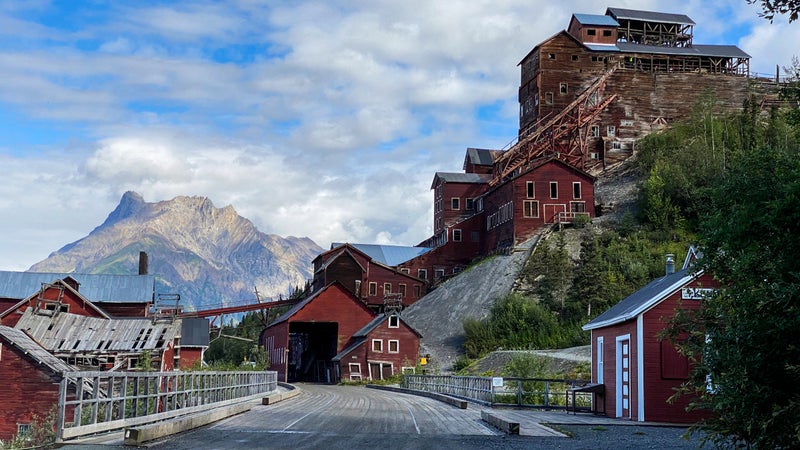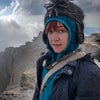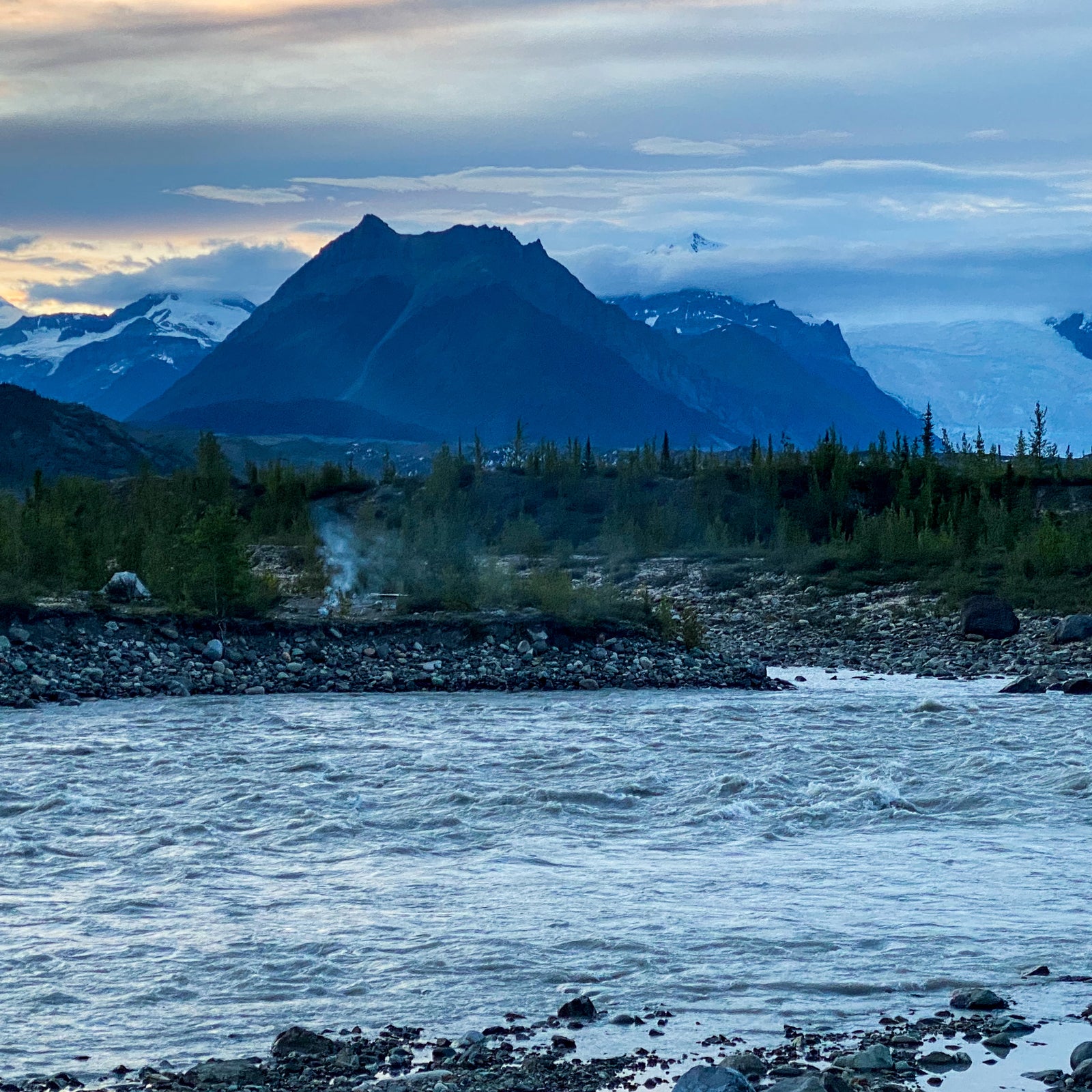62 Parks Traveler started with a simple goal: to visit every U.S. national park. Avid backpacker and public-lands nerd saved up, built out a tiny van to travel and live in, and hit the road, practicing COVID-19 best safety protocols along the way. The parks as we know them are rapidly changing, and she wanted to see them before it’s too late.
Wrangell–St. Elias is huge, even by Alaskan standards. By far the largest national park in the U.S., at 13.2 million acres, it sits seven hours east of Anchorage and, according to the National Park Service, encompasses an area the size of Yosemite, Yellowstone, and Switzerland combined. The park is home to the second-highest peak in the States, 18,008-foot Mount St. Elias, and many of the largest glaciers in North America. Trying to see it all, I knew, would be impossible in a lifetime, let alone four days.
Still, I began my first hike there optimistic and ready to explore, meeting my trip leader, Bryce Wall, at the St. Elias Alpine Guides office in the historic copper-mining town of Kennecott. Our mission? A steep ascent and scramble up to the 100-year-old remnants of the Erie Mine.
We began by hiking parallel to the enormous Root Glacier, a messy tongue of ice that spills from the mile-high Stairway Icefall. Delicate early-morning clouds began to clear, and I prayed we’d be granted a glimpse of 16,391-foot Mount Blackburn, the fifth-highest peak in the U.S. Before the haze could lift completely, we took a sharp right turn and started a relentlessly long slog up a loose-scree gully. Then the going really got steep.
My nerves began to sink their teeth into my brain the moment this casual scramble suddenly required several class-four moves in a row. The pitch was damn near vertical, and I had been expecting a mellow afternoon. I paused, terrified and clinging to the rocks, feeling in over my head. Anxious on the mossy boulders, I downclimbed 12 feet and hung my head in my hands. I wanted to bail.
Just then, Bryce chimed in: “Listen, even if we go down right now, we still had a pretty great day in the mountains. I mean, just look at that view of Mount Donoho.”
He was right, of course. Any day spent in the mountains is better than a day spent sitting around at home or in an office. I did my best to swallow my pride and enjoy the scenery as we slowly made our way back to town.
The next day was all about ice climbing, and I was determined to not let my nerves muck it up. It was my second time trying the sport. By some strange providence, I had the same guide as before, and Bryce outfitted our group with crampons, mountaineering boots, and harnesses before we set off to attempt the Root Glacier.
Soon I was surrounded by chilly waterfalls and aquamarine ice. A brisk glacial breeze sent shivers down my body and whipped my hair around my face. I was a little anxious to climb a hundred feet off the ground using a pair of ice axes and a set of sharp blades strapped to my feet, but the landscape was so mind-bogglingly cold and vast that it distracted my unease. The Root Glacier itself splayed out for miles beyond me like some immense, frozen river, and the steep summits of the Wrangell Mountains stretched on for what felt like eternity beyond that.
Stab, stab. Kick, kick, kick. There’s a rhythm to ice climbing that’s almost musical once you get the hang of it. I steadied my breathing and jabbed the metal spikes into the glacier, wobbly on my legs after the previous day’s folly. Taking my time, I focused and ascended slowly. Before I knew it, I was on top—on top of the glacier, and on top of my fears.

62 Parks Traveler Wrangell–St. Elias Info
Size: 13.2 million acres
Location: Eastern Alaska
Created In: 1978 (national monument), 1980 (national park and preserve)
Best For: Hiking, backpacking, rafting, ice climbing, glacier hikes, mountaineering
When to Go: Summer (38 to 66 degrees) and fall (minus 3 to 55 degrees) are the most accessible and popular months. Like much of Alaska, the park has long, , during which visitation is not recommended.
Where to Stay: is about as close to the McCarthy footbridge and the park shuttle stop as you can get. Private vehicles are not allowed past this point. It features dispersed camping, with outhouses and views of the Kennicott Glacier and River. I rented a killer rig from, with lights, a fridge, and a full bed in the back, and spent my four days in the park in style.
Where to Eat: in quirky McCarthy is the place to be once the sun starts to set. It serves rustic Alaskan fare, epic fries, and great beers.
Mini ���ϳԹ���: Tour the. This two-hour walking tour teaches visitors about the unique history of the area while providing excellent views of nearby mountains and glaciers.
Mega ���ϳԹ���: Go ice climbing or mountaineering. has a wealth of day and multi-day trips available for all skill levels, from simple glacier hikes to alpine peak-bagging expeditions.


